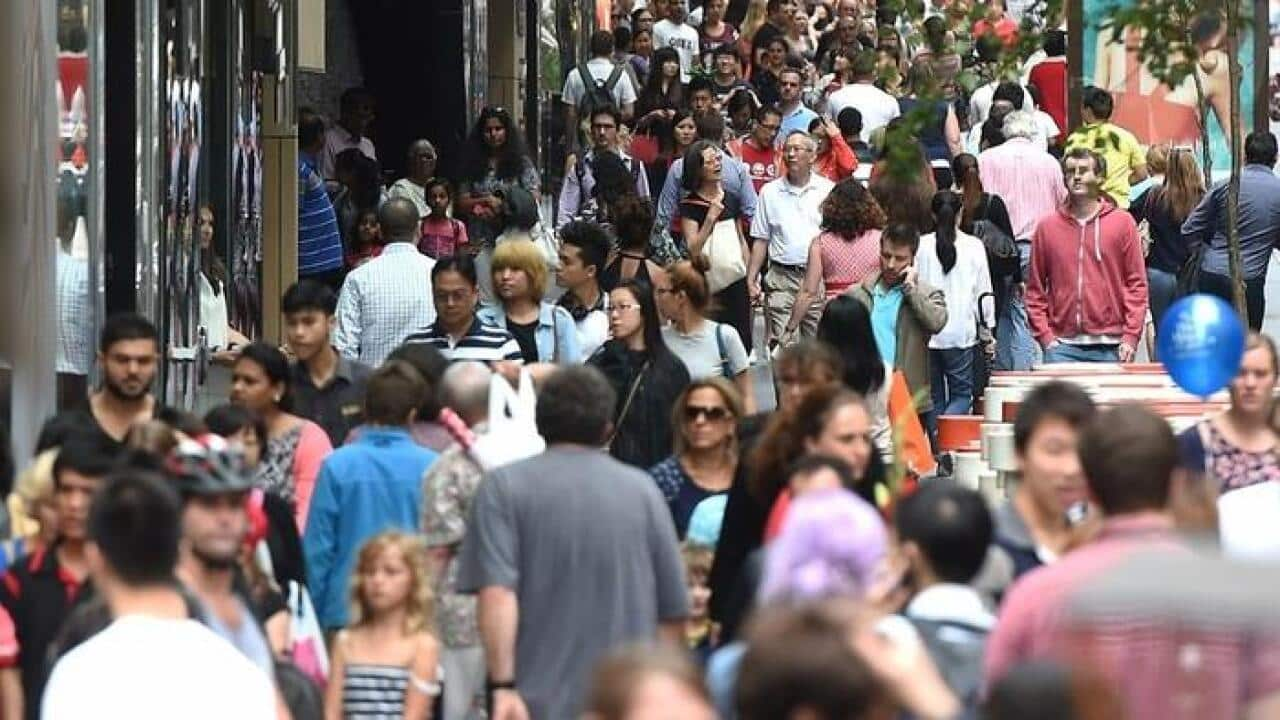Key Points
- Net migration to Australia saw its highest ever yearly increase 12 months.
- It is projected to be well above previous estimates in the next 12 months too.
- International students, backpackers and other short-term visa holders have jumped at the chance to return after COVID.
Australia’s net migration has ballooned to 400,000, its highest ever level, over the past year and will be well above the government’s initial projection for another 12 months.
But the country’s net intake will still be significantly under levels predicted before COVID-19 arrived on its shores, prompting a sudden halt to overseas arrivals.
Unveiling the long-awaited migration review on Thursday, Home Affairs Minister Clare O’Neil called for a major overhaul of Australia’s approach to immigration and insisted she was not advocating for a “big Australia”.
But figures provided to SBS News and discussed at National Cabinet on Friday show a two-year acceleration in net migration well above initial estimates, before a period of stabilisation.
The net overseas migration (NOM) is still set to be 315,000 lower this year than predicted in 2019-20, and is not expected to catch up to pre-pandemic estimates until 2030.

Home Affairs Minister Clare O'Neil has said she is "not advocating for a big Australia." Source: AAP / Lukas Coch
But a faster-than-expected return of international students and holiday makers means that will balloon to 400,000 in 2022-23 and 315,000 in 2023-24, National Cabinet was told.
That is the highest yearly NOM increase ever recorded in absolute terms, though the post-Spanish Flu reopening saw a bigger percentage increase to the country’s overall population.
NOM is expected to gradually fall back to historical trends of 235,000 annually in the mid-term.
Migration was decimated when Australia’s borders were slammed shut in early 2020, just months after the COVID-19 virus arrived, and remained closed until November 2021.
The move saw hundreds of thousands of international students forced to study remotely, and potential short-term visa holders locked out of the country.
By the time borders reopened, the NOM had taken a 500,000 hit compared to what was expected before the pandemic.
But the reopening allowed for multiple student year cohorts to enter simultaneously, while backpackers and other short-term visa holders have also jumped at the chance to come to Australia.
Addressing the National Press Club on Thursday, Ms O’Neil insisted the government’s strategy was “not about more people”.
“What's really important to me is that we've got these big national problems facing our country, and we're not getting the right people here through the migration system to help us address them," she said.
Central to that was retaining high-performing international students in the country, who the review found were often met with a complicated and laborious visa process after graduating.
Despite Ms O’Neil’s denials, deputy Liberal leader Sussan Ley accused Labor of pursuing a “Big Australia” policy.
“It’s unplanned and not linked to the skills crisis that we’re seeing all around us,” she told Sky News.
“There are hundreds of thousands fewer migrants in the country now than we thought would be here, before the pandemic, and we still face very substantial difficulties with housing.”










